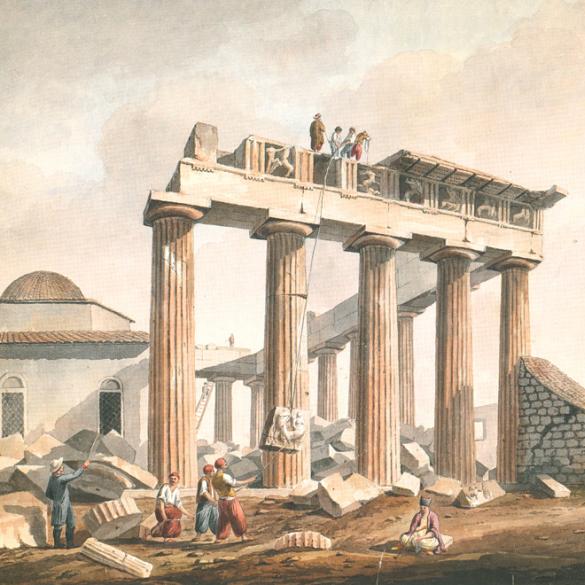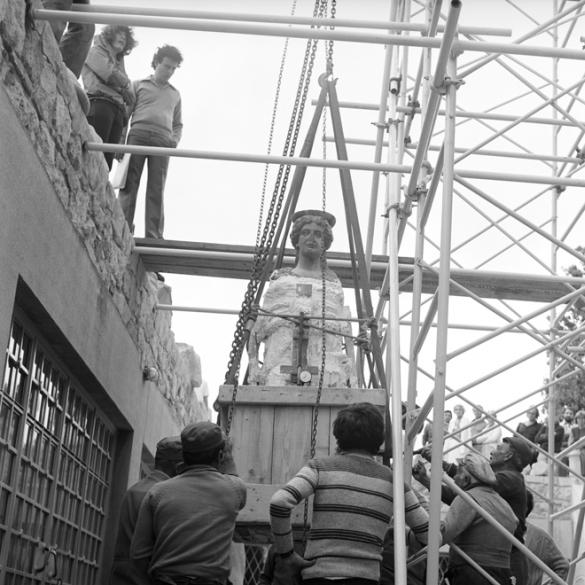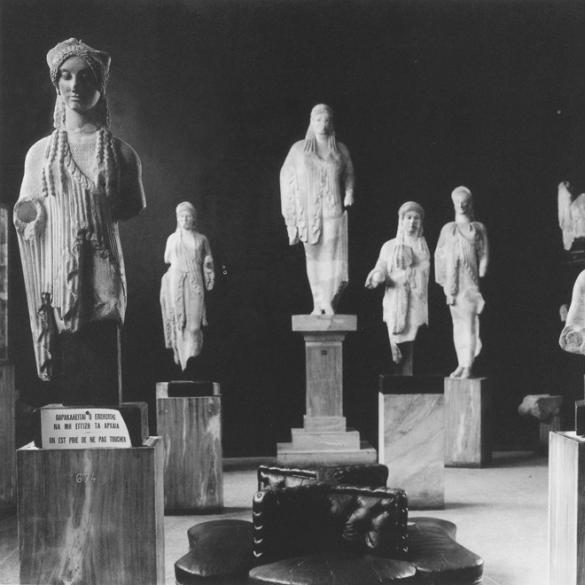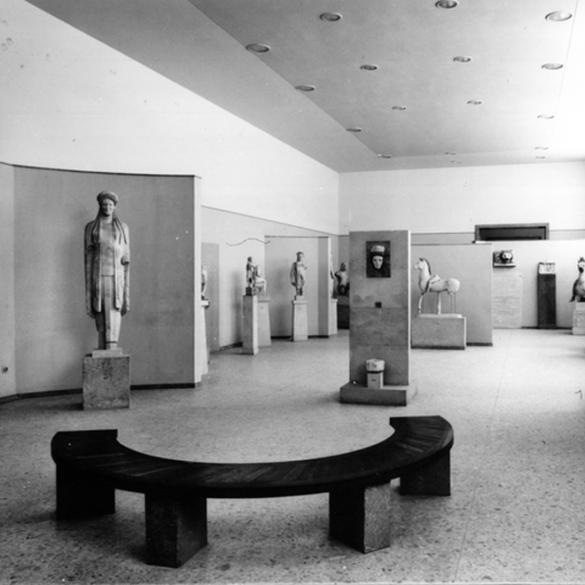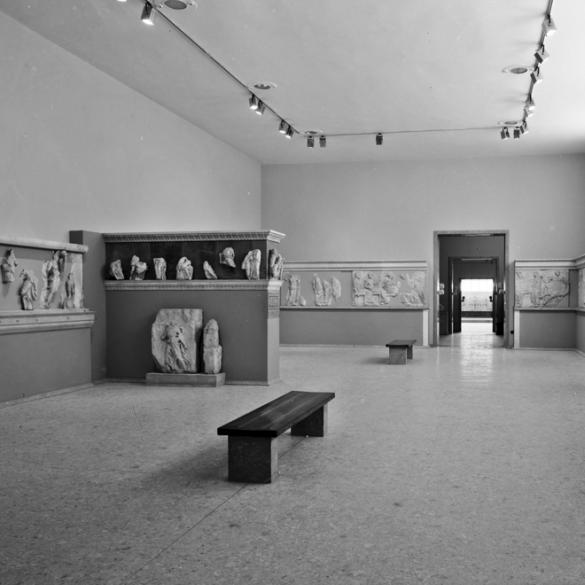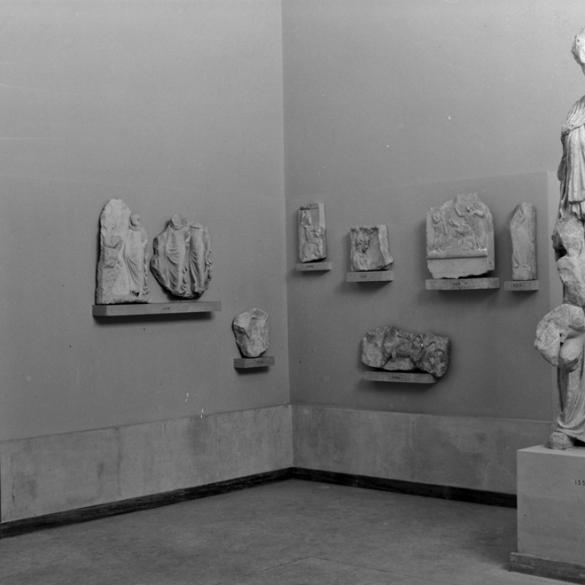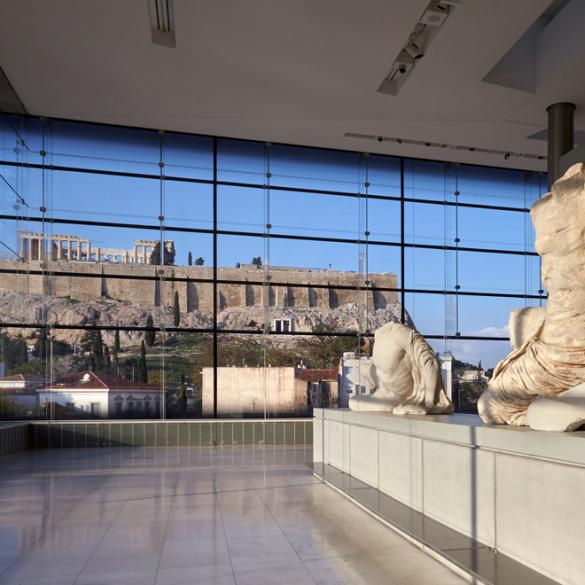MUSEUM HISTORY
Until the middle of the 17th century, the Acropolis’ most important monuments remained generally intact, as shown by the drawings of European travellers. In 1645, however, the Propylaia suffered severe damage from an explosion of stored gunpowder ignited by a bolt of lightning. Furthermore, in 1686, the Turks, facing a threat from the Venetian army led by General Morosini, dismantled the Temple of Athena Nike to use its building material for reinforcing the Acropolis walls and for construction of a defensive rampart in front of the Propylaia. Then, in 1687, came the Parthenon’s turn. Many of the building’s architectural members were blown into the air and fell in heaps around the Hill of the Acropolis due to the explosion of the gunpowder stored inside the temple. In the 18th century, as more and more travellers visited the Acropolis, they often made a point of taking away something ancient as a memento. Systematic looting of the site, however, occurred at the beginning of the 19th century, when Britain’s ambassador to Constantinople, Thomas Bruce, the 7th Earl of Elgin, managed to secure an authorization (firman) from the Ottoman Sultan for investigation of the Acropolis - but not for stripping the monuments of their sculptural decoration. Nevertheless, Elgin’s team removed a large number of the sculptures until then preserved on the Parthenon, as well as one of the Caryatids from the Erechtheion, four frieze blocks from the Temple of Athena Nike and other antiquities, which were shipped off to Great Britain.
In 1833 the Turkish garrison withdrew definitively from the Acropolis which, in 1834, became an archaeological site proclaimed by the newly established Greek State. Then began efforts to gather, preserve and protect the antiquities scattered on the Rock. Their number, which was increasing steadily due to the archaeological excavations being conducted in the hill’s ancient deposits, made it pressing to create a museum on the site. Thus began the search for a suitable location, which finally led to the decision in 1863 to establish the Museum in a hollow in the ground, southeast of the Parthenon. The Museum was founded in 1865, completed in 1874 and housed the finds of the first excavations on the Acropolis; however, it proved insufficient to accommodate the abundance of new finds which had been brought to light during the large, ongoing excavations, leading thus to the construction of a second small building in 1888, next to the previous one. Finally, following the Second World War, a radical architectural refurbishment was undertaken resulting in the creation of a new building that continued to operate until 2007.
In 1975 is formed the Committee for the Conservation of the Acropolis Monuments (ESMA), with a view to examining all the dangers of the Acropolis monuments and submitting studies. The first building that was taken care of by ESMA is the Erechtheion, from which the Caryatids were removed in 1979 to be saved from the relentless damage caused by outdoor exposure and they were transferred to the Museum on the Rock. The problem of insufficient space arose once again and the idea of constructing a new Acropolis Museum emerged - this time, however, not on the Sacred Rock.
The architectural competition was held in 2000, which led to the selection of the proposal by Bernard Tschumi and his Greek collaborator Michael Photiades. The new Acropolis Museum was constructed on the south side of the Acropolis at a distance of 300 metres from its monuments. The Museum’s foundations were completed on the 30th of January 2004 and its opening took place on the 20th of June 2009.




